- Home
- Ray Bradbury
Yestermorrow Page 5
Yestermorrow Read online
Page 5
In the other front window, as you march by, siren-summoned, is an absolute viper pit of garden hoses, all sizes, identified as to country of origin, poisonous or non-poisonous, astir and ascramble, writhing to leap into your hand to freshen a garden and lay the dust.
Ready to step inside now? But wait!!!
There is a moment of trepidation. Fear glints in the eye. The palms grow sweaty. Why?
Well, most men are terrified, are they not, of shadowing the sill of any Berlitz shop that teaches French? So are most of us fearful of thresholding hardware emporiums because, while we may have a love object in mind, we rarely know the name of the damned thing.
It follows then that your prescient 2001 doodad shop must post a sign above the front door:
HARDWARE SPOKEN HERE
—so as to lull the panic and entice the shy buck-antelope.
Once inside, the labels of everything must be super-size, with perhaps a genealogy of where the blasted name came from in the first place.
But again, hesitation on the sill…
Should one go home and wake the ever-receptive son, that boy capable of infection by this midnight disease?
For let’s face it, don’t the rites of passage include a patriotic American father double-marching his lad to the nearest glue-bottle, whitewash, lawnmower, scythe and tack-gun place, to teach him how to buy junk and horde trash? And, if the boy doesn’t cotton to this, shouldn’t he be loaned out to an orphanage or stashed at a mean uncle’s?
No matter. Right now, it’s twenty after midnight. The shop will only be open another two hours, better hurry…
Inside now, what do we see?
Displays of hardware, like rare jewels.
Aren’t some of them close to being those objects d’art that old man Fabergé crafted for the Czar? Why not, in our new shop here, showcase on velvet pillows a golden sieve, brass washer earrings that might become necklaces? Plus a bathroom plunger fit to be carried at a king’s coronation or the beehive crowning of a Pope? And, framed in wall tuck-ins, the museum masterpieces that Raymond Loewy spawned when asked to redesign the Mixmaster, the telephone, or the 1929 pencil sharpener? And all through the store those surpassingly beautiful electric fans. The ones that look like Maserati wire-wheels, with sky-blue blades, whirring, and whispering to you as you pass:
Touch Me. Buy Me. Sneak Me Home.
Once around the shop, reading and touching and you’re ready for the old hot toddy and cold shower. Your wallet fibrillates.
Over here, for instance, we find one of those wondrous mirror-wells, reflecting dishes in which copper pennies or silver dollars seem to float suspended in mid-air. Reach out to seize the coin—it’s not there! Optical illusion. Well, then, instead of coins, why not a super-size, optical-illusion well on the surface of which, changing day by day, floats the latest screwdriver, monkeywrench, or one-thousand-day light bulb?
What a grand way to focus attention on all the latest damn fool devices that funnel into our computer-chips-for-breakfast lives.
There are other ways to show-and-tell, of course.
Why not more display boards on which you hang fresh varietals of gimcracks, thingumabobs, and whatchamacallits, wired for sound? Press the tab and a friendly robot voice tells you just what in blazes the spotlighted object is. Saves you the blush of addressing your ignorance to the nearest clerk who studied Contempt at Tiffany’s.
How else will our 2001 Hardware Shop differ from just yesterday’s egg-whisk, carpet beater, washboard emporium? Somewhere won’t we collide with the Radio Shack Video Vortex Shops and sell VHS tapes on woodworking, picture hanging, and how to speak to a thumb that has just been hammered?
What about computer graphics, electronic imaging?
What Vasarely and Mondrian did with rulers, T squares and compasses is now being toothpaste-tubed out by mindless electronic machines that see not, feel not, but deliver beauty.
Wouldn’t our store need one art gallery wall for all the latest “batteries included” dreams.
Then, men who wouldn’t be caught Déco in an art gallery might whisper “curiouser and curiouser” if they passed a kaleidoscopic graphic image light show, and discover it was done not by a crazed dropout but by a hairless computer.
And stay on to be further victimized by very high frequency clerks.
Stay on to buy laser equipment for the Mad Dad in his high-voltage basement. Holograms, homegrown, for the Grandpa who wants to stare around the sides and over the tops of his monstrous offspring.
So why not, since it is a toy shop to begin with, focus attention on the latest toys, perhaps only one or two centralized and spotlighted amidst the scrapers, varnishers and paint removers? For instance, any human in his or her right mind has got to want the latest etch-a-sketcher, yes? You not only etch your own sketch, but press a button and fabulous patterns are added electronically to your original art.
Or how about a Little Loader? Been around for years but still running fresh. It’s the set where you construct a plastic railway on which a battery-operated hopper runs back and forth picking up and delivering “rocks” over a circuitous track. Damn thing runs for hours back and forth. Better than watching paint dry. Owned one for years. Run it for my cats on Sundays. Gave one of these to a local orchestra conductor years ago. She has been my slave ever since.
No, don’t turn the hardware shop into a Toy Emporium, but, as I say, bring in one or two new and imaginative Japanese inspirations per month, retiring the old, and you’ve got that added éclat every shop yearns for.
But… attendez!
I have saved the best for last.
Consider the territory underfoot, the floor of our not-so-far future fish-hook and Singer sewing-machine-bobbin’ emporium.
Why, look. Can it be? It is!
The Floor Is Transparent
Laid out in largish squares of see-through plastic glass, it is an immense film, tape or TV screen on which images can be projected from below!
Entering the shop at high noon or dinner time (best time to shop when all those damn fool customers won’t get in the way) you walk on firefalls of lava, erupting volcanoes, Dante’s hell-factory poured steel and red-hot ironworks. All the fires on earth, earth-born or man-made furnaces, are there to tread. You walk the white-hot coals where the metal emerges to become all the stuffs in the magical windows outside, or laid out in laser-beam explosions up above.
You are seemingly suspended then on a history of mankind’s attraction to, conquering, and usage of—fire. Over there, an ancient cave fire-shadows a stone wall. Next over, the flames that baked the brick cities of Babylon and Athens and Rome, and shaped the weapons that locust-scourged the air. And here the Renaissance bonfires that ignited knowledge and illuminated history. And just next, the simple straw blazes that exhaled warm breath to fill paper pears and lift the Montgolfier brothers into the skies over France.
And here the thunderous exhaust of the Apollo rockets, with their bright roars, heading back up to the first fire, our sun.
Well now, by God, don’t tell me you won’t rise at midnight to go barefoot on that Hindu fakir’s fire-walking hot-dog bed.
Frame the whole picture again. The fabulous harvest bins of eager and itching tools, the cobra viper pits, the attic filled with a history of discards, the basement waiting with its winepresses, and the transparent floor to Caesar-stride as you load up with goodies and wander home, wondering what hit you.
Would you not, once home, dial a number and say, “Sorry, Ralph. Know it’s late. But, I just came back from walking half an acre of blazing charcoal, fireflies, and the great Andromeda nebula. The address? Well—”
Well, there you have it. I told you I would not, like Peter O’Toole, build you a better camel or even a greater nation.
But I can dream you a new home away from home.
And send you off with a pocket full of jingling brass and a mouthful of nails.
This way to the lovely mad house.
1987
> THE AESTHETICS OF SIZE
A Twilight Museum Blueprint
From the ridiculous to the magnificent to the sublime.
From King Kong to Apollo 11 to Michelangelo.
By what route, under what circumstance?
I have often told friends to go see King Kong, the terrific, the wondrous.
Nonsense! they cry, having seen him. Not so!
Indeed not, I respond. Because you saw Kong only on a home television screen. My 50-foot ape was chopped down to your 12-inch-high dwarf.
Similarly, space travel from Canaveral to the Moon and Mars is starved and withered, the great candle melted, giving up three hundred long feet to matinee star in Hop O’ My Thumb.
Kong belongs on cinema walls, in his proper dimension.
Apollo II should climb the stars in Imax or Omnimax theaters.
And how does this Aesthetic of Size apply to Michelangelo, Titian or Raphael?
Viewed in the galleries where they hang, full-size in multifold glories, one thing.
Up close, in library books, another.
Wrong size.
The trouble is you hold art in your hands. But, consider, shouldn’t it be that the art within those books should hold you in its hands?
May I solve the problem?
Let us build the first color-slide projection art gallery in history.
A good-size gallery, lit only from behind a series of twelve or fourteen projection screens. And on these screens, as we wander a room some 40- or 50-feet-long by 30-feet-wide, let us project the finest landscapes by Monet, the napes of lovely women’s necks by Manet, or the summer-ripe peach ladies of Renoir.
And all in their original size.
Which is what our slide-projection gallery is all about.
And not just a dozen Renoirs or Monets, but everything they painted or drew!
Which is the other thing our gallery would be about.
Because of the size, shape, weight and number of paintings by the world’s greatest artists, packing, shipping and hanging them by the tens of thousands is, if not impossible, incredibly expensive and time-consuming.
But, with a few small cartons of color slides, you can air-mail Picasso anywhere, set him up and have him hung within an hour.
Multiplicity is one thing. Size, to repeat myself, is another.
Your average art lover cannot possibly guess, reading the measurements of a Botticelli or Veronese coffee-table book, just how large the stunning originals are!
But now, for the first time, the non-travelers of the world will be knocked back on their heels when they enter our, you might say, camera obscura environment to find Botticelli’s Seasons towering, and Veronese’s Disciples looming, over them.
“My God!” the common cry will be, “are the great paintings of the world all that immense!?”
Not all, no. Some. Quite a few.
And heretofore unseen, or if seen, melted down to hand-mirror size and trapped in books, beautiful and small, instead of ten times more beautiful and perhaps a hundred times larger than the lives that pass through these galleries to be changed, enroute, forever.
Why bother?
Well, even in this jet-travel time, millions will not fly about the world, millions will still be stay-at-homes in 2001. It will be for them, as it was in the time of Victoria and Albert and their incredible Curators, that we will build our twilight museum. The Queen and her Prince truly cared for the general population, and so shipped home treasures to please the shopkeeper and thrill the barmaid.
Then, too, there will always be the jet-traveler, who will hunger for a large size memory refreshment. Anyone in need of a proper Monet fix, or a Seurat eye-dazzlement can ramble to our just-before-sunrise, just-after-dark-shadow gallery, and watch as a dozen and then a hundred and then a thousand bright images come up in waves, like tides on an amazingly endless shore.
Stroll in our twilight gallery and see twelve portraits for half an hour. Or touch a button, stay for three hours, and see every mind-numbing grotesque painting that Dali ever imagined while driving horizonless highways without his car.
Technical problems?
Plenty.
But we have moved into a high-tech world, where the quality of photography, color slides, projectors and screens should insure us of high-resolution delivery.
Not just another head-on slide show. But a gallery-seeming experience, where you are surrounded on all sides, by the imagination of the artist, a gymnasium where his whole life’s work can perform endlessly for art critic, passionate art lover, or your merest student from first grade to senior high.
Well, there you have it. A garden of ever-changing delights. Or a fountain that runs in colors and changes shapes through noons, mid-afternoons and nights. A gift to all who will never travel. A loving reminder, to those who have, of what they left behind in Florence, in Rome, in Paris, and all across the world.
Can we collect these photographic bouquets and rearrange them and hand them back as celebrations on no particular day for no particular reason, save beauty itself?
Might as well ask if Monet can make the sun climb the cathedral facades at dawn, dazzle the battlements in the late day, and bronze them with a golden flesh as the sun vanishes.
Monet, borrowing from the history before Time cried: “Light!” And there was Light.
Why can’t we do the same?
1987
YESTERMORROW PLACE
Symbology of a University
We have all strolled through colleges and noted that the library is here, the art gallery there, the museum next door, and the classrooms and theater just beyond. Often, we found libraries sharing quarters with certain colleges. But if two or three of the above-mentioned environments happen in one building, they are separated in confines that shut out people rather than invite them in.
Imagine, instead, what I call a Yestermorrow architecture, imaginative enough and large enough to enclose everything in a single structure.
And one, I might add, that lures, calls, leads, and pulls you from one area to the next.
Imagine…
An art gallery enclosing
a museum, enclosing
a library, enclosing
a university, enclosing
a theater.
Five concepts,
five environments,
five ways of seeing life.
Each circling,
each rounding the other.
The outer circle, the art galleries, would illustrate all of the metaphors to be found as you move inward.
The second circle would display all the artifacts of our various histories in a museum round.
The third enclosure would be the library.
Followed by the inner round of the classrooms.
And at last, the theater.
Why a theater at our architectural core?
Well, isn’t life one drama topping another? Isn’t everything theater?
Everything, that is, from courting rituals to marriage ceremonies, to office space, to town plaza, to rocket pad at Canaveral?
Try to imagine any human activity that does not finally shape itself into vivid metaphors spoken, acted, taught.
What we have here then is a series of incredible cups, round boxes, a five-shelled wagon train circled to shield us from the night.
Again, stepping through from circle to circle, what would we find?
The paintings, lithographs and watercolors that portray humanity in private encounters or en masse.
Natural life itself as delivered to us by archaeologists and anthropologists from tarpits or Troy ruins.
And then all the massed bricks of the wondrously mysterious library where one can monkey-climb the stacks to Kilimanjaro leopard, Everest snow, or Alpha Centauri immortality.
Giving the onionskin another peel—the university.
Small perhaps, under the circumstances, but containing a dozen rooms where a dozen subjects, relating to the surrounding totality, are delivered f
orth.
And then at the sounding heart, the voices of dramatic theater, or your special vibrant professor, or your teaching-tool cinema, repeating in yet other forms, the truth collided with on your way around or on your way in.
An architecture, in sum, it seems to me, as marvelous as those rounded self-encircling nautilus shells found along the shores of our seas.
Easy to build? In the mind, yes. With glass, brick, stone, and mortar? Difficult. And expensive.
But if finally blueprinted, built and sent down the ways to ride the mid-oceanic grass of a California university garden, what a place to travel, wander, and stay. What a pomegranate experience. What an incredible womb, finally, in which to grow ideas and rear young and old children.
Will it be built between now and the century’s end? And in the one hundred years beyond, can it be the most imaginative teaching hearth ever built to warm our minds?
I say it can be done.
I wish it to be so.
1988
YES, WE’LL GATHER AT THE RIVER
L.A. Pedestrians, Arise!
We’ve all heard the words to the old and familiar spiritual “Yes, We’ll Gather at the River,” and, indeed, in a few years, if we do not gather at the actual rim, we will put ourselves together near the river. We speak, of course, of the L.A. river, which channels dry wind and warm dust through most of our Southern California year.
And, yes, we will gather, if we plan it well, at a riverbed of now-isolated communities in downtown Los Angeles—those areas being Little Tokyo, Olvera Street, Chinatown, and the intermingled Italian commercial isles.
Created separately by different customs in various years, these proofs of our immigrant past stand but a few hundred yards apart. Yet they might as well be separated by tens of miles for all the mixing or lack of mixing between these towns within a city.
Rarely do the inhabitants of the three or four communities stroll from one to the other. Rarely do tourists, abandoning their cars, ricochet happily from one immigrant duchy to the next.

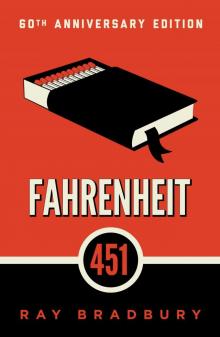 Fahrenheit 451
Fahrenheit 451 Zen in the Art of Writing
Zen in the Art of Writing The Halloween Tree
The Halloween Tree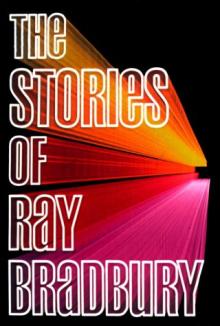 The Stories of Ray Bradbury
The Stories of Ray Bradbury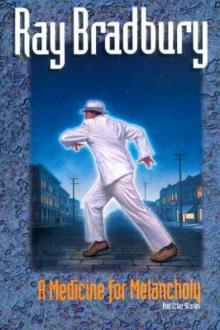 A Medicine for Melancholy and Other Stories
A Medicine for Melancholy and Other Stories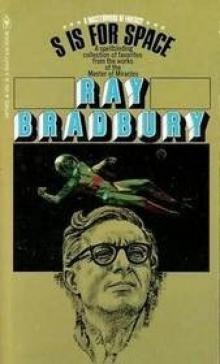 S Is for Space
S Is for Space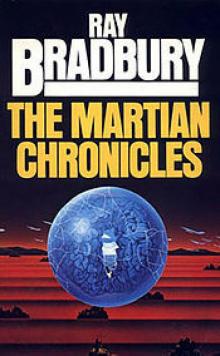 The Martian Chronicles
The Martian Chronicles Futuria Fantasia, Winter 1940
Futuria Fantasia, Winter 1940 Farewell Summer
Farewell Summer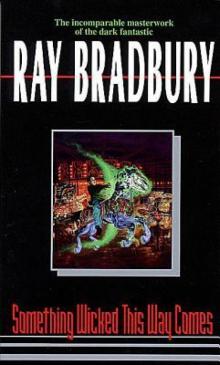 Something Wicked This Way Comes
Something Wicked This Way Comes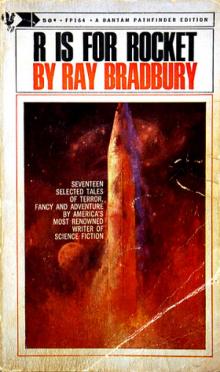 R Is for Rocket
R Is for Rocket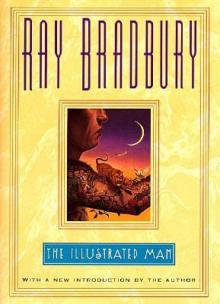 The Illustrated Man
The Illustrated Man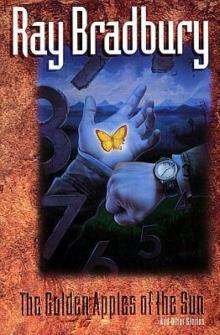 The Golden Apples of the Sun
The Golden Apples of the Sun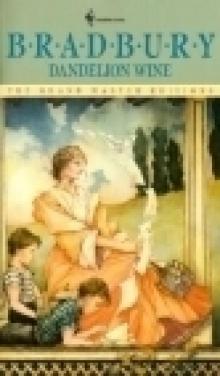 Dandelion Wine
Dandelion Wine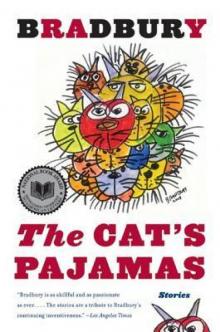 The Cat's Pajamas
The Cat's Pajamas A Graveyard for Lunatics
A Graveyard for Lunatics The Playground
The Playground We'll Always Have Paris: Stories
We'll Always Have Paris: Stories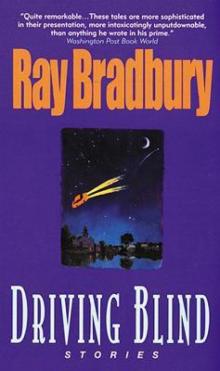 Driving Blind
Driving Blind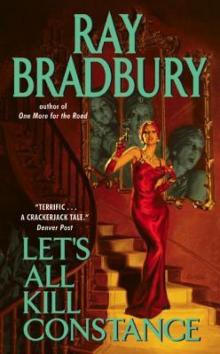 Let's All Kill Constance
Let's All Kill Constance The Day It Rained Forever
The Day It Rained Forever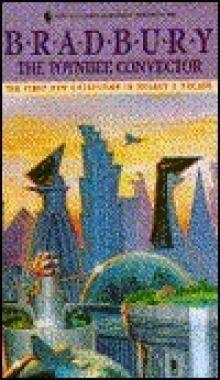 The Toynbee Convector
The Toynbee Convector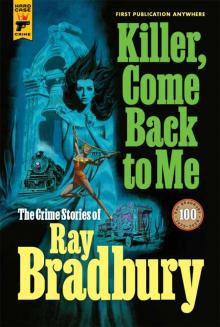 Killer, Come Back to Me
Killer, Come Back to Me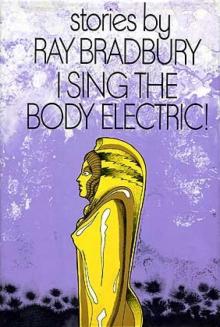 I Sing the Body Electric
I Sing the Body Electric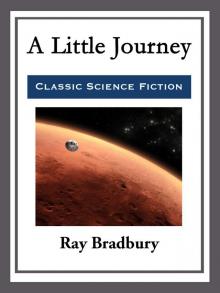 A Little Journey
A Little Journey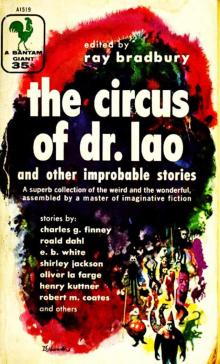 The Circus of Dr Lao and Other Improbable Stories
The Circus of Dr Lao and Other Improbable Stories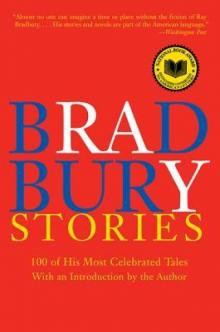 Bradbury Stories: 100 of His Most Celebrated Tales
Bradbury Stories: 100 of His Most Celebrated Tales From the Dust Returned
From the Dust Returned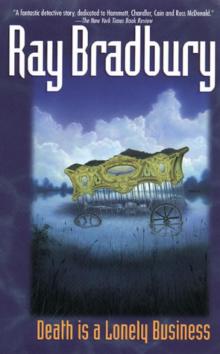 Death Is a Lonely Business
Death Is a Lonely Business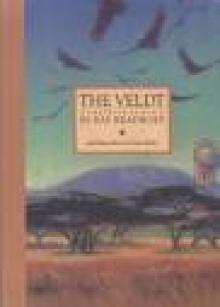 THE VELDT
THE VELDT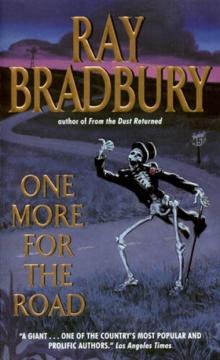 One More for the Road
One More for the Road Futuria Fantasia, Summer 1939
Futuria Fantasia, Summer 1939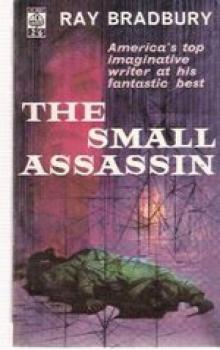 The Small Assassin
The Small Assassin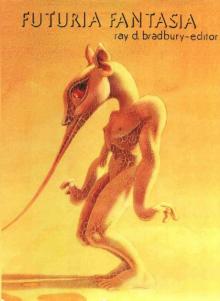 Futuria Fantasia, Fall 1939
Futuria Fantasia, Fall 1939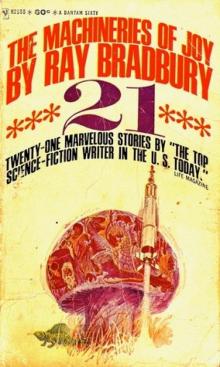 Machineries of Joy
Machineries of Joy The October Country
The October Country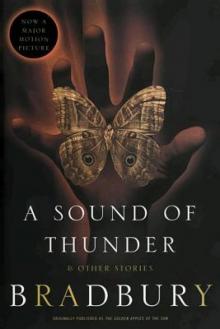 A Sound of Thunder and Other Stories
A Sound of Thunder and Other Stories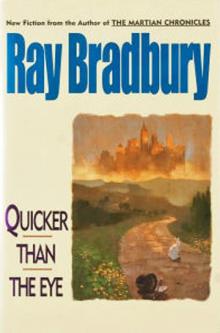 Quicker Than the Eye
Quicker Than the Eye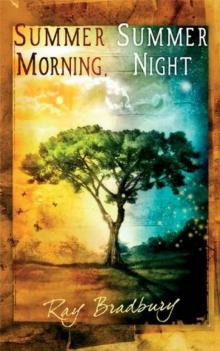 Summer Morning, Summer Night
Summer Morning, Summer Night Yestermorrow
Yestermorrow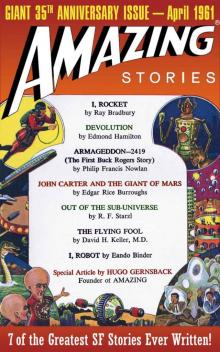 Amazing Stories: Giant 35th Anniversary Issue (Amazing Stories Classics)
Amazing Stories: Giant 35th Anniversary Issue (Amazing Stories Classics)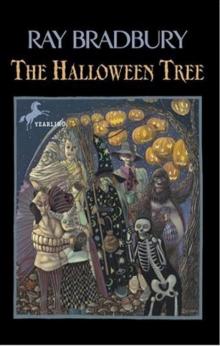 (1972) The Halloween Tree
(1972) The Halloween Tree Listen to the Echoes
Listen to the Echoes A Pleasure to Burn
A Pleasure to Burn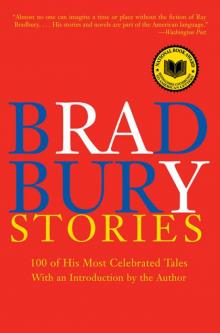 Bradbury Stories
Bradbury Stories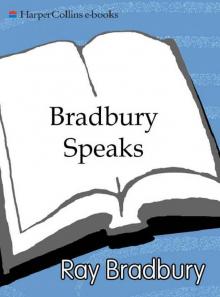 Bradbury Speaks
Bradbury Speaks Ray Bradbury Stories Volume 2
Ray Bradbury Stories Volume 2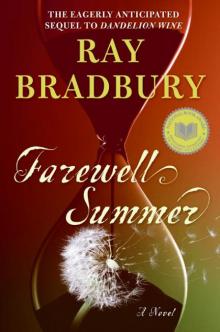 Farewell Summer gt-2
Farewell Summer gt-2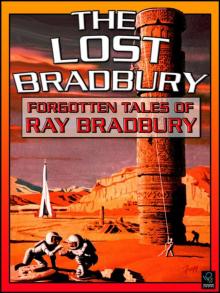 The Lost Bradbury
The Lost Bradbury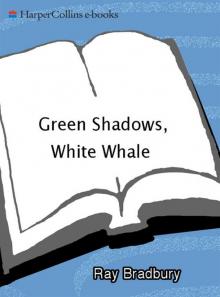 Green Shadows, White Whale
Green Shadows, White Whale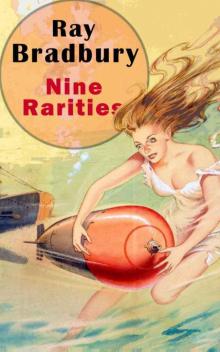 Nine Rarities
Nine Rarities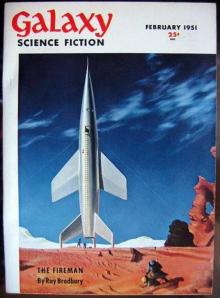 The Fireman
The Fireman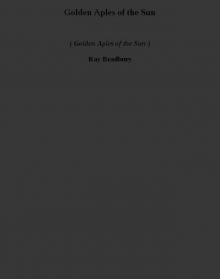 Golden Aples of the Sun (golden aples of the sun)
Golden Aples of the Sun (golden aples of the sun)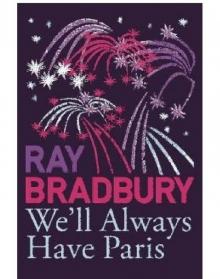 We'll Always Have Paris
We'll Always Have Paris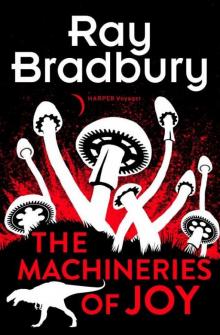 The Machineries of Joy
The Machineries of Joy A Graveyard for Lunatics cm-2
A Graveyard for Lunatics cm-2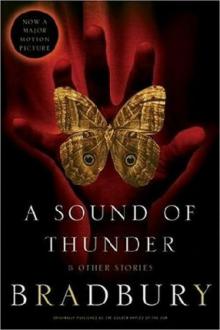 The Sound of Thunder
The Sound of Thunder Where Robot Mice and Robot Men Run Round In Robot Towns
Where Robot Mice and Robot Men Run Round In Robot Towns